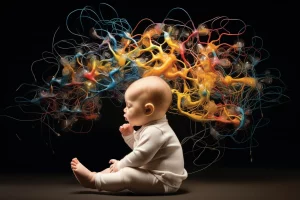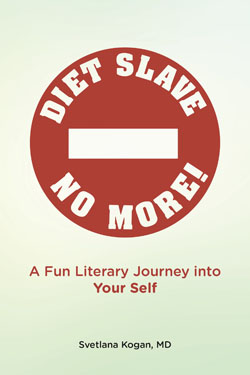While trying to understand the reason for the way we are today, we often look back at our early childhood and scrutinize milestones in our development. Just like animals, when we are born, we are placed with our first “herd.”
This FIRST herd can be as tiny as a single parent and a child, or it could be huge—like two parents with many children and grandparents living together. Regardless of the size, we need our first herd for survival. Young children have no problem recognizing family adults as leaders of the pack. After all, children are small and fragile while adults are big and strong—the leadership roles emerge naturally.
A baby’s brain is like a spider web with gazillions of connections, which are growing EVERY DAY. This and other phenomena were well-studied by the scientists even back in the 20th century. Our parents would have been very excited about the scientific discovery that that our brains emit a special type of electromagnetic wave.
That’s right: Waves don’t just happen in microwaves and oceans. Our brains make waves too! Kids’ brain waves were recorded in the research labs with a special device called EEG, and a striking pattern emerged. In newborns and toddlers up to 2 years of age, mostly delta waves were observed. These also occurred in adults but only when they were asleep and, eventually, the research concluded that babies younger than 2 years of age are essentially asleep with their eyes open.
That makes sense. Babies sleep, eat, pee, and poop, and learn to move by imitating—all under the wings of their first herd—their family. In contrast, EEGs of slightly older children—from 2 to 6 years of age—revealed an entirely different picture—mostly theta waves—the same waves adults have when they are either daydreaming, or meditating, or are being hypnotized. This latter finding of brainwave activity in children is stunning.
Your 2-6-year-olds are essentially walking around in a hypnotic trance. This means that the knowledge learned at this age will become so sealed in their deepest parts of the brain, forming a subconscious mind, that no one and nothing will be able to undo that. These are your child’s first lessons of good versus evil. This is their time to understand kindness versus cruelty and so much more.
Preschool starts, and all of a sudden, the children’s clustered world undergoes a huge transformation. Now the SECOND “herd” emerges: A preschool class or a kindergarten class, with a teacher as an adult in charge. A classroom is where teachers rule, and your kids instantly sense a new leadership, and their brains adjust to accommodate this new authority.
Equipped with the new research about children’s brain development, we can ask ourselves as parents or grandparents: Is a “secondary herd” (a babysitter, a kindergarten, or a school) teaching my 2-6-year-old child or grandchild the right things? After all, they are molding my child’s hypnotized brain most of the day, five days a week. Do I like what information my child is exposed to?
The content that populates these young brains at this critical stage in their development will determine much of their future choices in life: politics, role in a society, views on sexes, world views, and so much more. Now that we are equipped with the knowledge of the children’s brain development, we have to face the hard truth: either we spend more time molding these young minds or someone else will. The choice is ours to make.












